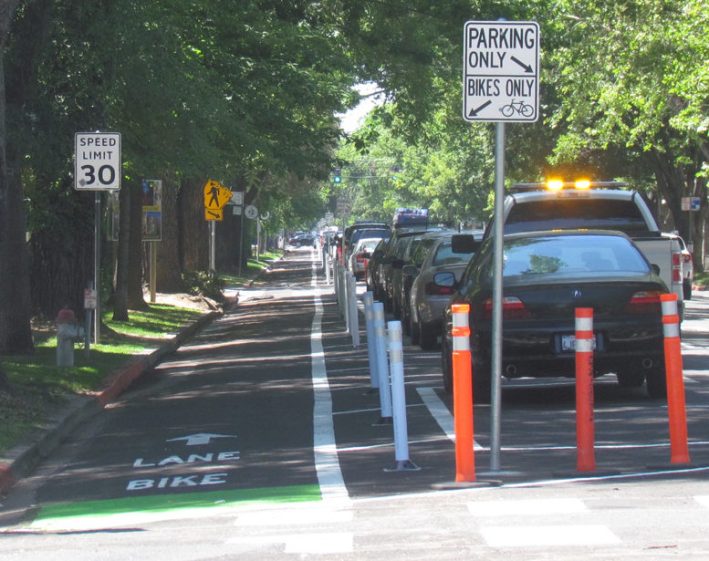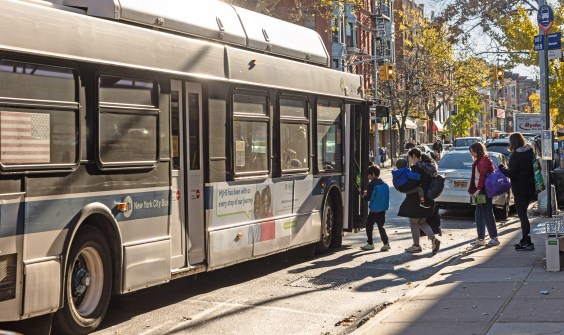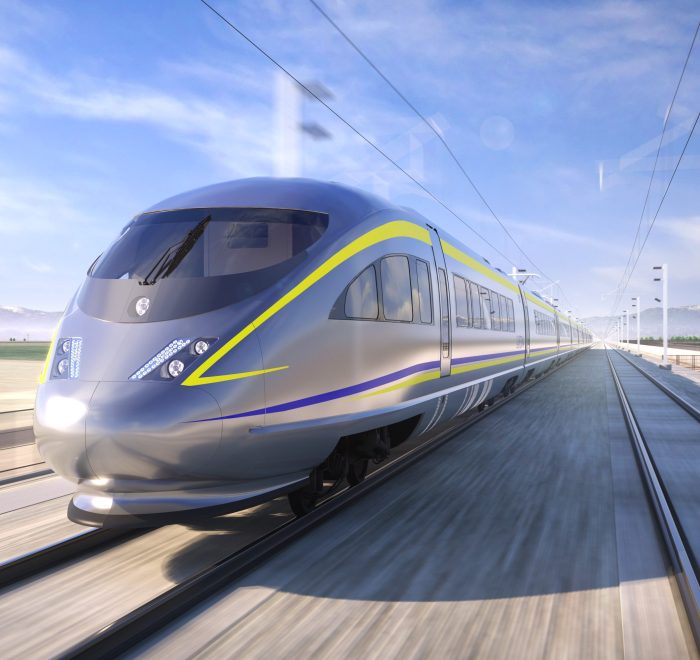Caltrans Deputy Director’s Ride Shows Potential for California Transportation Investments
1:05 PM PDT on May 24, 2018
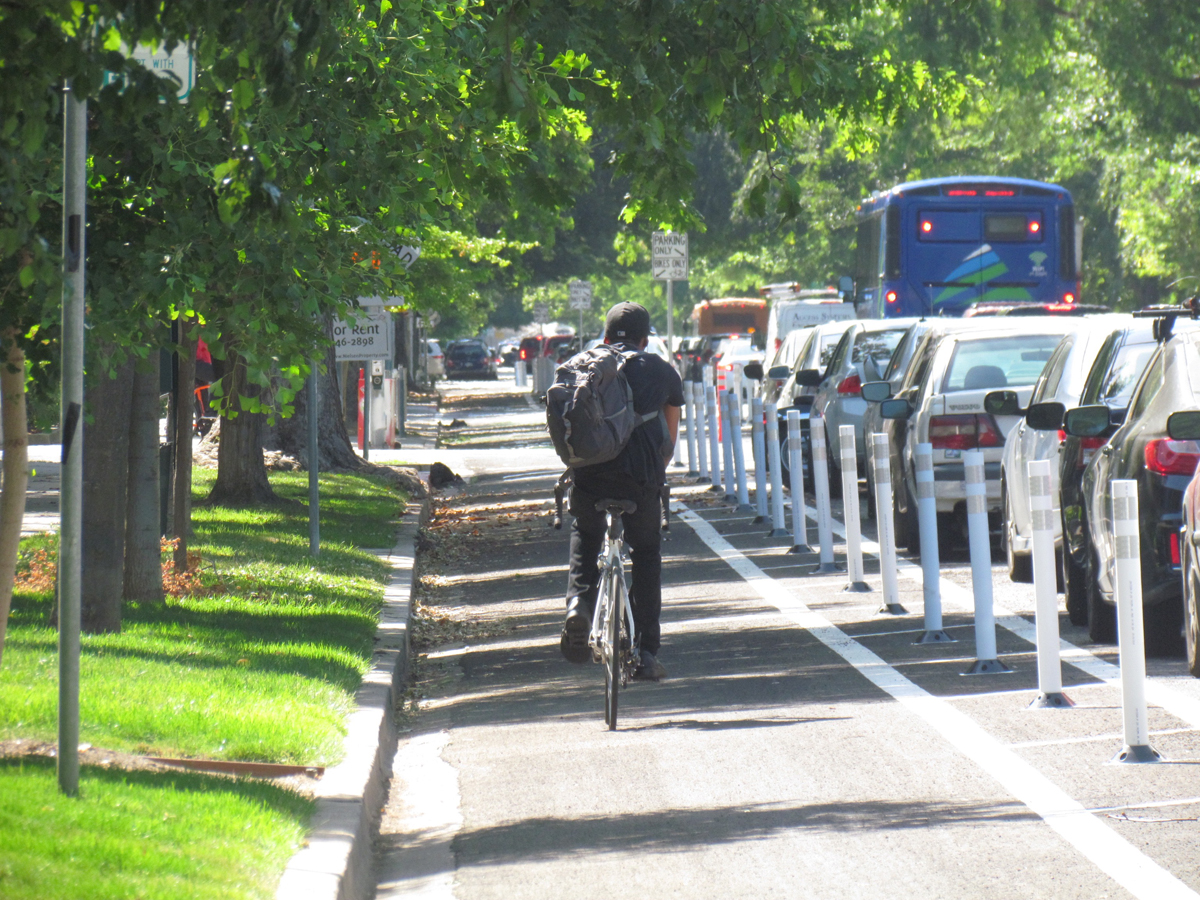
Note: GJEL Accident Attorneys regularly sponsors coverage on Streetsblog San Francisco and Streetsblog California. Unless noted in the story, GJEL Accident Attorneys is not consulted for the content or editorial direction of the sponsored content.
The annual Caltrans (Deputy) Director's ride kicked off a tour of Sacramento's and West Sacramento's burgeoning bike infrastructure earlier this week. This year's ride featured more riders and less spandex than previous rides, and there was plenty of new infrastructure to explore and discuss and to imagine in the future.
It offered a glimpse into a future in which California invests in transportation for people, not just cars.
This year's ride was hosted by Caltrans Deputy Director Ryan Chamberlain, and attended by about thirty people, among them Caltrans Sustainability Chief Ellen Greenberg—who showed up on one of the new-to-the-region Jump bike-share bikes—and her deputy Jeanie Ward-Waller, Kate White of CalSTA, Rachel Carpenter, Bike and Pedestrian Safety Chief at Caltrans, Jim Brown of Sacramento Area Bike Advocates, and other Caltrans and city employees, including planners and engineers.
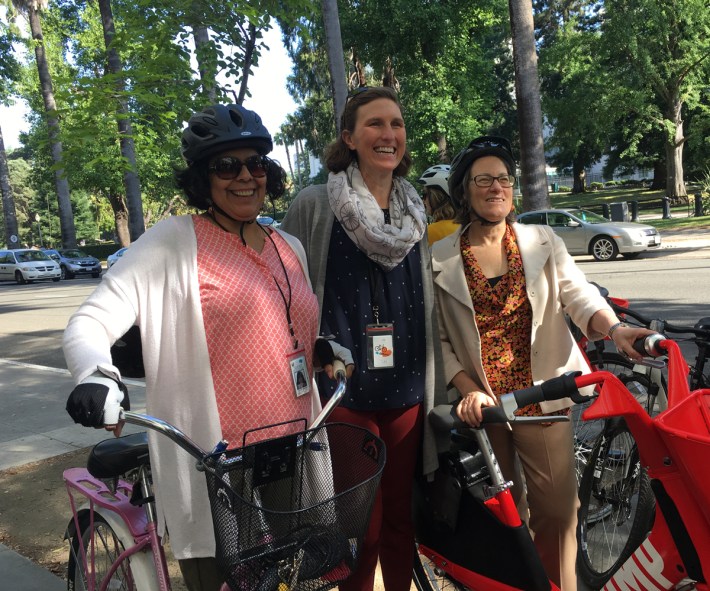
The ride, led by Sacramento's bike and pedestrian planner Jennifer Donlon Wyant and her West Sacramento counterpart Chris Dougherty, was just one of several events during Bike Month that highlighted both cities' recent and dramatic increase in bike and pedestrian facilities. West Sacramento has plans to add many new housing units just across the river from Downtown Sacramento, and is in the process of fixing streets, sewers, and intersections, adding sidewalks, and creating bike lanes before those units go in.
Meanwhile, the city of Sacramento is returning its downtown grid to something closer to its original design as part of what Vice Mayor Steve Hansen called their "back to the future plan." The city was originally designed for multimodal use, he said. "A lot of that flexibility was stripped out in the '50s and after, and the streets were turned into urban highways. That's been bad for health, bad for bikes, bad for pedestrians.”
The plan, Grid 3.0, has been in the works for several years, and was just awarded funding from the S.B. 1 Local Partnership Program. The amount awarded to the project--$5 million—is small potatoes compared to some of the other projects in the LPP, such as the $20 million that will go for a new highway in Sacramento County and the more than $33 million awarded to a highway widening in Contra Costa. But the relatively inexpensive change will be profound for the city, and for the region.
“S.B. 1 has made it possible to literally change the built environment,” said Hansen. And because the state capital is a large employment center, drawing commuters from throughout the region, this is an opportunity to demonstrate what a good, people-based transportation system can be. “Sacramento is the role model for a largely car-dependent region,” said Hansen. “We're setting the standard for suburban areas to evaluate what they're doing.”
The changes are being made with the help of funding from local taxes, the Active Transportation Program, and the cap-and-trade-funded Affordable Housing and Sustainable Communities program. They are supported by the city's Complete Streets policy that requires maintenance and repair projects to include changes that accommodates all users, clear design standards and policies, and city staff who look for opportunities to make changes quickly and cheaply, and don't hesitate to adjust them when they don't work.
Hansen calls the city's method a "low-cost high-benefit approach." The brand new, parking-protected, two-way bike lanes on the parallel one-way streets P and Q--the highlight of Sacramento's portion of the bike tour--exemplifies their method. Plans for the two streets had been in the works for several years. When it was time to repave them, the city took the opportunity to restripe lanes, rededicating one of the vehicle lanes for the two-way bikeway, moving parking away from the curb, and adding a painted buffer between the parking and the bikeway. Soft-hit posts were added later, and the city designed and produced signs to guide car parkers and bikes in the right direction.
But those lanes were only the most dramatic recent change. Other, smaller modifications are also making big differences for riders. For example, a one-block-long bike lane that doesn't seem like much to crow about closes a gap on H Street, a major bike arterial that extends all the way to Sacramento State University. Simple paint changes along 10th street in front of the State Capitol now help bikes avoid conflicts with the chartered buses that frequently drop off and pick up and wait for groups of visitors, sometimes protestors, at that location.
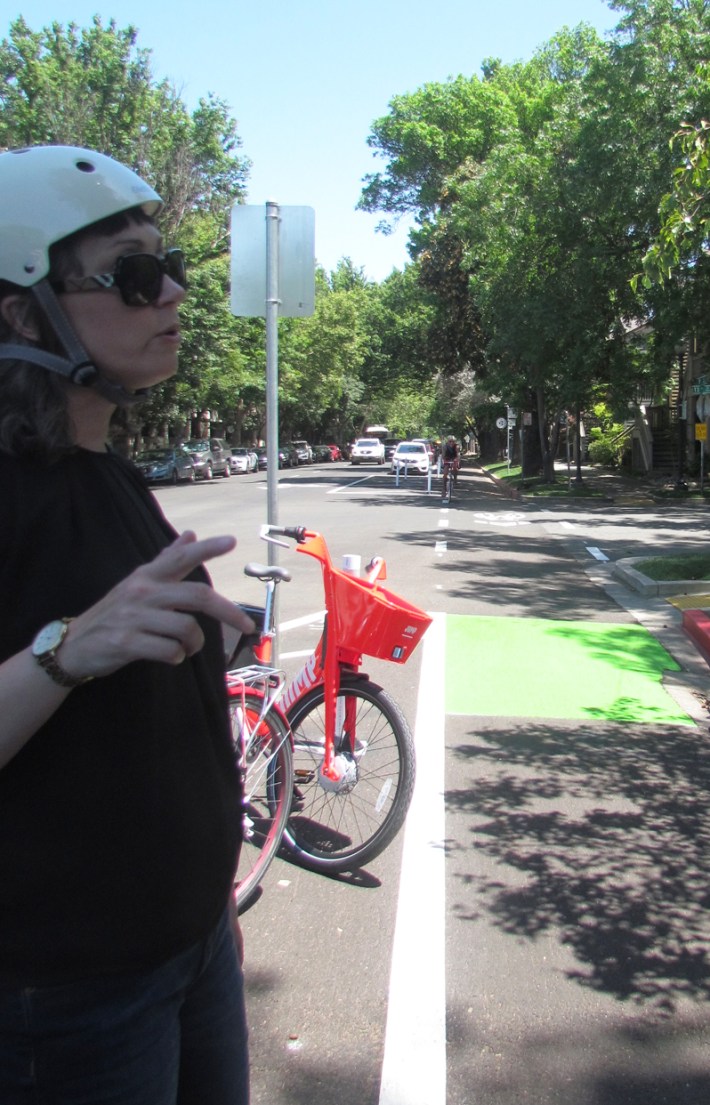
These changes also demonstrate how important it is for planners and engineers to actually use bike facilities and understand how they work—and don't. One of the stops on the Deputy Director's Ride drove this point home. On G Street, a quiet, low-traffic street near downtown, bike lanes provided a mostly low-stress ride. This is the commute route of planner Donlon Wyant, who noted an anomaly at one intersection where the vehicle lane divided into a through-lane and a right-turn lane. An experienced cyclist, she didn't hesitate to move left and take the lane to go straight through, but she noticed less assertive bicyclists were hugging the curb, ending up in a dangerous position to the right of right-turning vehicles.
Donlon Wyant knew exactly who to consult about the issue. She asked city engineers whether that turn lane was necessary, and after doing a traffic analysis they discovered that it wasn't—there was not enough traffic to call for it.
So they scraped out the right turn arrows and repainted the lanes to match the rest of the street. It was a minor repair, and “not pretty”—“We want our streets to be pretty,” said Donlon Wyant—but it quickly made a big difference for bike riders on that street.
Another Caltrans employee on the Director's Ride helped make the point in another way. As the ride followed G street, riders enjoyed the shade of the beautiful trees lining it, as well as the sights of Victorian houses, lush gardens--and a very cool gym in what looked like a historic garage, where several people were lifting weights just inside the wide, open doorway. “I didn't know all this stuff was here,” said the employee. “You don't see it when you're driving through. This is eye-opening.”
This employee is not a novice bike rider, but his rides are recreational, on facilities away from vehicle traffic such as the American River Trail. He said he had never seriously considered bikes as a transportation option for city streets. Asked if he would go back to his colleagues and convince them to ride Sacramento's streets, he laughed. “I can't believe more of them didn't join this ride,” he said. “Who wouldn't want to be out on a bike, on a day like this?”
Just imagine for a second what changes could be possible if Caltrans employees, city planners, and civil engineers rode bikes regularly on the facilities they build—and considered bicycles a viable transportation option, instead of one only for students, environmentalists, and poor people.
Donlon Wyant, who has only been working for Sacramento for two years, does just that, and in her short tenure she has already helped lead the city towards a new way of thinking about and investing in transportation. She credits her team, good communication, and a willingness to engage with all the people necessary to get these projects through the usually slow and cumbersome planning process. Vice Mayor Hansen is more direct, calling Donlon Wyant a “shero.” Without her, he said, "we would not have been able to roll out these parking-protected bike lanes."
"It used to be that biking was a dude thing,” he added, “But we've really broken something open here. This is an amazing transportation revolution.”
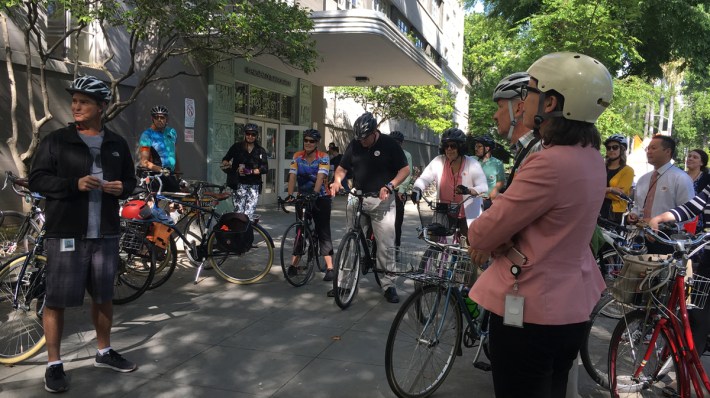
For her part, Donlon Wyant credits support from her department, staff, and elected officials like Hansen. She regularly takes city engineers to the annual NACTO Designing Cities Conference, where they meet other engineers—not just planners—who are building and designing on bike and pedestrian facilities. And she spends a fair amount of time working with people in other departments—from parking enforcement to the street-sweeping crews that clean debris out of the bike lanes—as well as fielding phone calls from the public.
Many of those calls--surprise!--are about the reassignment of parking space. All the new facilities together have so far eliminated about a hundred on-street parking spaces, albeit in an area that has many off-street lots. “I have been told that I am the worst public servant in the world,” she remarked.
There is also traffic. Sacramento's traffic is generally quite light, except for about an hour in the morning and evening when everyone arrives and leaves work, all at once. Standing on P Street on a recent Friday afternoon, hoping to get a photo of a bicyclist using the new lanes, we were able to see some of the city's traffic issues quite clearly. The street had been reduced from three to two vehicle lanes, which were packed with cars heading out of town. Buses were stuck in the traffic, and the relatively quiet bike lane was an oasis of safety.
It wasn't a typical Friday afternoon; several graduation events were taking place in downtown, and a parallel street was closed to set up for the Amgen Tour of California festivities on the following day. It was a particularly difficult commute, and it was clear that people were impatient behind the wheel of their vehicles.
But a wider road, another lane, would only have spread out the mess slightly; everyone was headed towards the same bottleneck at the freeway on-ramps. And, we noted, every car we observed that afternoon held a single occupant, taking up several square feet of space on the packed street.
In contrast, the bike riders on the new bikeway took up so little space they were almost invisible.
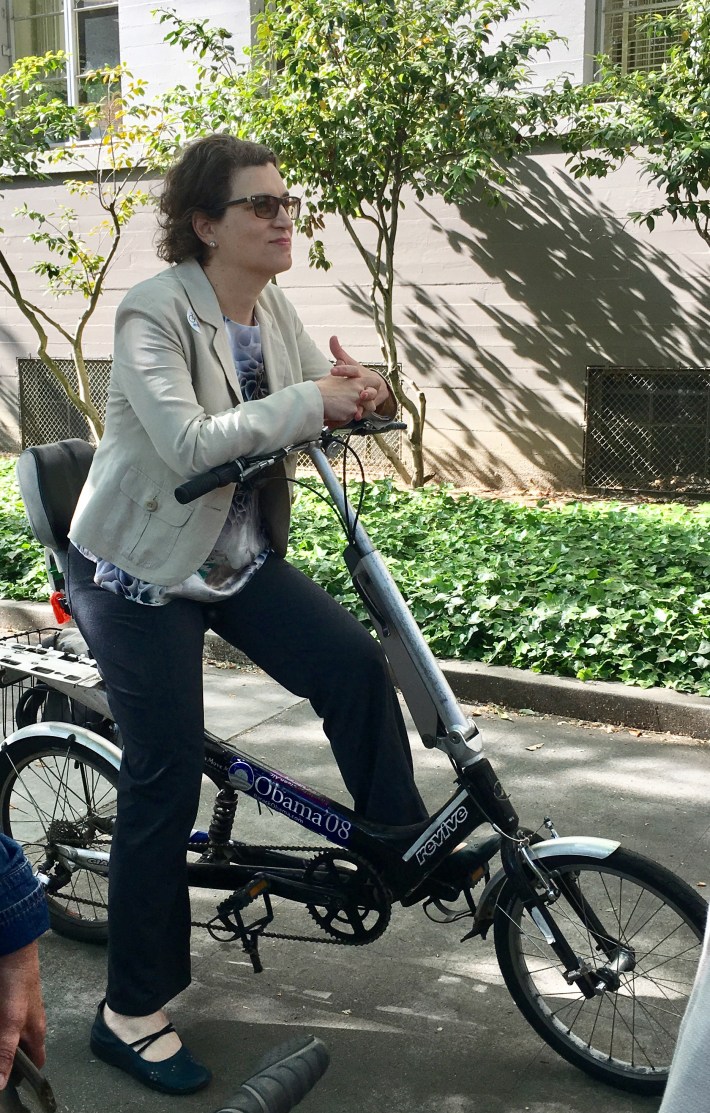
It wouldn't take much to change the situation, though. If one in ten of those drivers got fed up enough to find someone going in the same direction, and carpooled, or grabbed a Jump bike-share, or hopped on a bus, the traffic would have been considerably lighter, the buses wouldn't have been stuck, and the jam would have ended much sooner.
Other changes coming soon to downtown Sacramento's grid—even before the gas-tax-funded Grid 3.0 project—could help convince people to dump their cars. A major one-way arterial leading southeast out of downtown, J Street, will get a parking-protected bikeway some time this summer. That project will involve converting a travel lane to create a left-side bikeway to avoid conflicts with transit and freeway on-ramps.
Then there is the recent launch of an all-electric bike-share fleet of 300 Jump bikes in Sacramento, West Sacramento, and Davis, with plans to expand to 900 when the program is fully rolled out. Just within the first four days of its existence, 800 people joined the program and logged over 1,800 rides.
The Grid 3.0 plan will eventually extend the new parking-protected bikeways on P and Q as well as the new 10th Street bikeway, create another parking-protected bikeway on 9th Street, and convert two one-way streets, 5th and I, to two-way, with bike lanes on both sides of the street.
Sacramento is not just any city—it's the state capital, hosting regular visitors from all over California, including elected leaders who live here at least part-time. If Sacramento can be a model for the region, it can also be a model for the entire state. That opportunity is not lost on the city's planners and elected officials. “I think the city can show the capital the way,” said Hansen. “I want the state capital to be the focus, as it should be. But I want our city to be as loved as any other city,” he said.
The Deputy Director's Ride concluded with a visit to the Caltrans headquarters employee bicycle parking facility, where Chamberlain cut a ribbon on a new bike repair station. Judging from the number of bikes parked there, the department will soon need a bigger facility. Let's hope they get one.
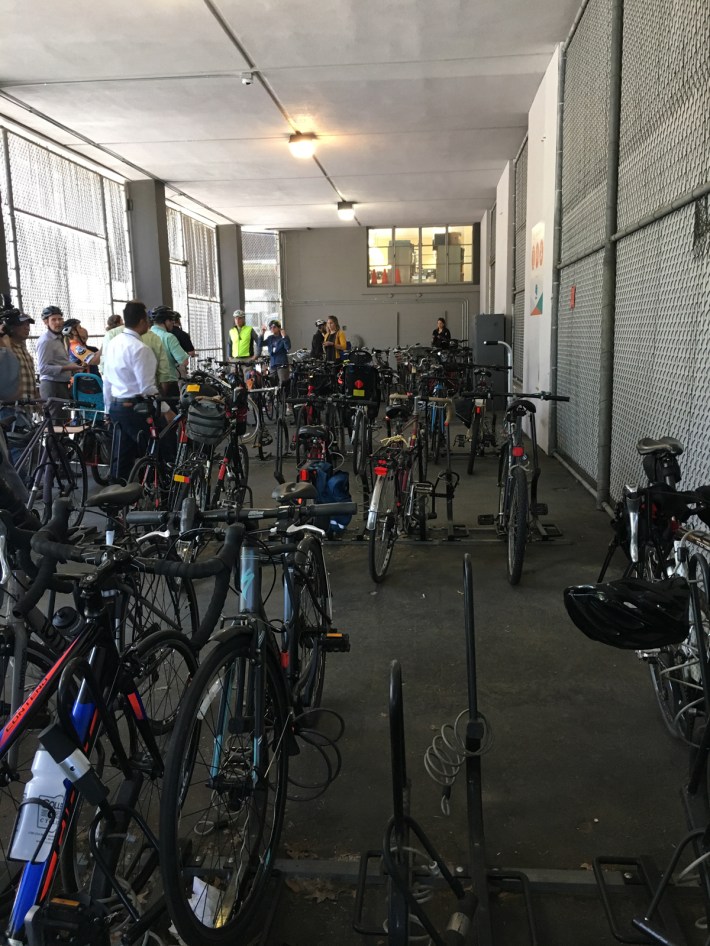
Streetsblog California editor Melanie Curry has been thinking about transportation, and how to improve conditions for bicyclists, ever since commuting to school by bike long before bike lanes were a thing. She was Managing Editor at the East Bay Express, editor of Access Magazine for the University of California Transportation Center, and earned her Masters in City Planning from UC Berkeley.
Stay in touch
Sign up for our free newsletter
More from Streetsblog California
Sudden State Funding Freeze Leaves Transit Agencies Hanging
Transit agencies were caught off guard by a 60-day funding freeze announced on the day they were expecting the allocations
Friday Video: How to Make Places Safe For Non-Drivers After Dark
A top Paris pedestrian planner, a leading GIS professional, and Streetsblog's own Kea Wilson weigh in on the roots of America's nighttime road safety crisis, and the strategies that can help end it.
Friday’s Headlines
Is your city safe for bicycling? Progress on CA high-speed rail; E-bikes are game changers; More
LAPD Was Crossing Against Red Light in Crash that Killed Pedestrian and Injured Six in Hollywood
The department says the officers had turned on their lights and sirens just before crossing. Their reasons for doing so remain unknown.
Wider Highways Don’t Solve Congestion. So Why Are We Still Knocking Down Homes for Them?
Highway expansion projects certainly qualify as projects for public use. But do they deliver a public benefit that justifies taking private property?
